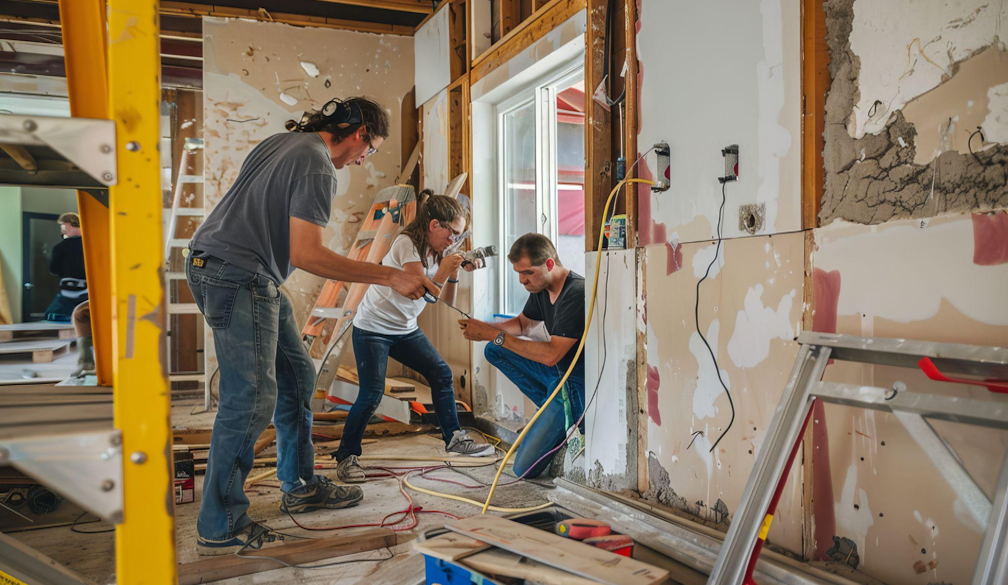Renovating an Old Home? Here’s What You Should Fix First

Restoring an old house comes with flair and a few surprises. Although the temptation to jump straight into design improvements is strong, some necessary repairs should not be overlooked, as they could delay your entire renovation project and lead to expensive fixes.
Potential problems, such as damaged wiring, water spillage, and structural damage, often hide under the surface. By addressing these fundamental issues first, you can ensure that your renovation stays on budget, is safe, and will stand the test of time.
Why Renovating Old Homes Can Get Expensive Fast
Updating an older house is an exciting project, but it’s rarely an easy or inexpensive one. Many homeowners begin their renovation journey with designs in mind—new flooring, updated bathrooms, and fresh lighting—without fully considering the systems that support those glamorous features. A failure to conduct plumbing, electrical, and structural inspections can be costly.
Older homes often hide significant issues behind the walls. Once the renovation begins, you may uncover problems like old wiring, rot, or faulty structural elements. These issues not only stall progress but also drive up costs. This is why it’s important to address the essential repairs before focusing on aesthetics. Fixing leaks, faulty wiring, or unseen damage is key to protecting your investment.
Check the Pipes Before You Tile the Bathroom
One of the most common issues in heritage and mid-century homes is old plumbing. Galvanised steel or cast iron pipes tend to corrode over time, leading to poor water flow, dripping taps, and discoloured water. Additionally, poorly sloped or blocked drains can cause backflow, potentially damaging your interiors.
Before you renovate your bathroom, make sure to check the plumbing. If you upgrade the plumbing after the fit-out, it usually means ripping everything up again. Doing it properly the first time saves time and money.
It’s wise to search for a plumber near me and book a local expert who is familiar with the area’s plumbing systems. They can assess whether a basic repair will suffice or if a full replacement is necessary. Addressing plumbing issues upfront prevents future damage to your newly renovated space.
Don’t Overload the Circuit — Upgrade Your Wiring
Old properties often feature wiring that wasn’t designed to support today’s electrical needs. If your switchboard is still using ceramic fuses or you don’t have safety switches, you’re not only inconveniencing yourself, but you’re also exposing your home to fire and serious electrical risks.
Signs of electrical problems include flickering lights, hot power points, tripped breakers, or a strange buzzing sound. These should never be ignored, especially when you're about to install new lighting, appliances, or a ducted system as part of your renovation.
If you suspect electrical issues, contact an emergency electrician immediately. By upgrading your switchboard, rewiring outdated systems, and ensuring everything meets safety standards, you can minimise risks and protect your investment. You may also want to consider adding additional power points and data outlets to future-proof the property.
Structural Surprises – Why Pest Control Inspection Matters
It’s easy to assume that a house’s structure is sound, especially if it has stood for decades. However, appearances can be misleading. Common structural issues in old homes include subfloor damage, termites, or deteriorating support beams.
If you didn’t arrange a pest inspection before buying, it’s not too late to get one now. A certified pest control specialist can identify damage that you might overlook, especially in areas difficult to inspect, such as the roof cavity, crawl spaces, and timber frames. Even homes that seem stable may have hidden problems like water ingress, shifting footings, or sagging beams due to pest activity. Identifying these problems early allows you to factor them into your renovation budget as structural repairs. It also ensures you don’t waste money on cosmetic repairs, only to discover you must address safety concerns first. Pest control inspection provides valuable guidance before renovation and helps you make informed choices.
Roofs, Ventilation, and What You Can’t See
Some of the most serious issues in older homes are hidden. Roof leaks, lack of ventilation, and mould buildup in the roof or ceiling space may not become apparent until it’s too late. Trapped moisture in insulation, rusted flashing, and clogged roof drains can cause serious water damage when heavy rainfall occurs.
Before you start renovating the interior, make sure to check the roof and ventilation structures. Homes that have been closed for extended periods may suffer from stale air or dampness, which can lead to air quality problems. Replacing old whirlybirds, installing exhaust fans, and repairing roof seals can greatly improve comfort and reduce future maintenance costs.
A thorough inspection now can save you thousands later, especially if it prevents moisture from seeping into freshly painted ceilings or newly laid floorboards.
Conclusion: Renovate Smart, Not Just Pretty
Restoring an old home is not just about vision and style; it requires a carefully planned process and a readiness to address hidden issues first.
Rewiring, structural repairs, and plumbing upgrades may not be as exciting as selecting benchtops or tiles, but they form the foundation of a safe and efficient home.









